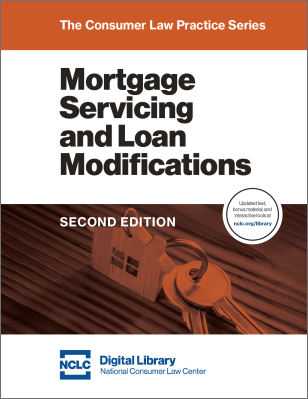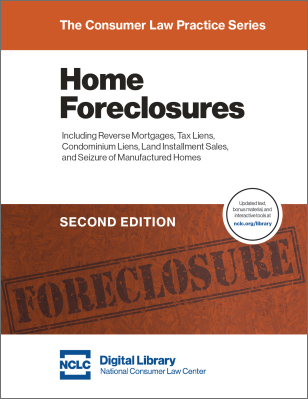Since this is hurricane season, it is timely to set out homeowner rights when a natural disaster causes a homeowner to fall behind on mortgage payments. There are a number of important protections for these homeowners. While the available relief is not dramatically different than standard loss mitigation tools, in many cases homeowners affected by natural disasters do not have to jump through as many hoops to access help. In addition, advocates should demand that loan servicers honor the foreclosure delays that loan investors require in these circumstances.
Step # 1: Determine the Investor
When representing a homeowner in danger of foreclosure, the first and most important step is to identify the loan’s investor. As a general matter, it is the investor, and not the loan servicing company, that determines the rules that apply and the options that are available to prevent foreclosure and to obtain loan modifications. The vast majority of outstanding mortgage loans are subject to rules imposed by investors such as Fannie Mae, Freddie Mac, Federal Housing Administration (FHA), Veterans Affairs (VA), or the United States Department of Agriculture’s Rural Home Service (RHS). These players in the mortgage origination and servicing market are described in NCLC’s Mortgage Servicing and Loan Modifications §§ 1.2.2 and 1.2.3.
There are some tools to quickly determine investor identity in addition to making a written request. Fannie Mae and Freddie Mac, who combine to have the largest share of the mortgage market, have easy loan look-up websites to determine if they own a mortgage. See https://ww3.freddiemac.com/loanlookup/ and https://www.knowyouroptions.com/loanlookup#.
To determine if a loan is FHA-insured, look for an FHA case number on the mortgage document, specific language in the mortgage and note forms, or through the payment of an FHA premium on the mortgage statement. In some cases, unfortunately, loans may have been stripped of their FHA-insured status; call HUD’s National Servicing Center if there are questions at 877-622-8525.
A VA-guaranteed loan also has specific language in the note and mortgage, and there are fees paid to the VA noted in closing documents. While a borrower with a mortgage directly from RHS will be very familiar with the agency, homeowners with privately serviced RHS-guaranteed loans often do not know the loan’s status. If a RHS-guaranteed loan is suspected, directly ask the servicer to review the homeowners’ closing documents. See generally NCLC’s Home Foreclosures § 3.2 (discussing federal and state laws that require disclosure of the owner or investor behind a mortgage loan).
Step # 2: Declaration of Emergency
It is critical to determine if a homeowner’s property is within an area declared as a disaster. For example, FHA rules apply only when the location is a Presidentially-Declared Major Disaster Area (PDMDA). While Fannie Mae and Freddie Mac have a broader definition of disaster and require individualized steps when one occurs, their primary modification program for disaster victims only applies when the property is located in a declared disaster area. For a discussion on the Federal Emergency Management Agency (FEMA) and the disaster declaration process, review FEMA’s website.
Step # 3: Determine Options Available from the Investor
The investor’s rules determine what steps loan servicers must take to suspend the foreclosure process for borrowers in default and what options are available for them. There are different rules for Fannie Mae and Freddie Mac, for FHA, for VA, for RHS, and for other mortgage loans.
Homeowner Options for Fannie Mae and Freddie Mac Loans
For Fannie Mae and Freddie Mac loans, servicers must comply with specific sections of the relevant servicing handbooks. According to the Fannie Mae guide, if the servicer has “any doubt” about the impact of the disaster on borrower performance, “it must suspend any legal proceedings” until it can determine a course of action.
In addition, both Fannie Mae and Freddie Mac have specially designed loan modification programs for people in disaster areas that do not require the borrower to submit any financial information. The programs add any amount due to the balance and extend the remaining term of the loan up to 480 months. These options are described in NCLC’s Mortgage Servicing and Loan Modifications § 7.3.2.
Homeowner Options for FHA Loans
FHA requires an immediate moratorium on foreclosures in PDMDAs, which includes foreclosures that have not started and foreclosures in process. For recent disasters, HUD has issued Mortgagee Letters, which are statements of policy to its loan servicers providing specific details that apply to each disaster.
On August 29, 2019, HUD released updates to its disaster relief options allowing for loan modifications and partial claims (a HUD-specific tool that allows the borrower to forbear amounts owed) without the need to provide financial information. These programs allow homeowners to confirm they have recovered income and can resume payment by completing a three-month trial plan. While these updates are not mandatory until November 30, 2019, servicers may put them in place immediately and advocates should demand them for their clients. In addition, homeowners who have not fully recovered may apply for standard loss mitigation options. FHA options are described in NCLC’s Mortgage Servicing and Loan Modifications § 8.3 and the new program at § 8.3.5.
Homeowner Options for VA and RHS Loans
The VA issues circulars in response to specific disasters outlining necessary steps that servicers must take. In recent circulars, the VA has only encouraged servicers to halt foreclosures in disaster areas. The agency also reminds servicers of the relief options generally available for borrowers in default. Advocates dealing with VA-guaranteed homeowners should complain to the VA if a servicer has failed to take appropriate action to help borrowers in need. See NCLC’s Home Foreclosures § 6.7.3.
Servicers of RHS-guaranteed loans must suspend “any and all” foreclosure actions for homeowners directly affected by presidentially declared disasters. Servicers should evaluate homeowners’ individual situations, and can offer homeowners who were current or near current at the time of the disaster individual situation forbearance or a loan modification without performing the standard financial analysis. The servicers can reduce interest rates, extend the loan term, and even forebear interest or principal. See NCLC’s Home Foreclosures § 6.7.4.
The USDA has a website dedicated to disasters for borrowers with RHS direct loans. The website confirms that impacts from a natural disaster qualify for the loss mitigation options available for borrowers with RHS direct loans.
What If No Clear Rules Apply?
Unfortunately, some homeowners will have loans owned by other investors, and these investors will not have clear and publicly available rules for loan modifications and disaster relief. Advocates working with these borrowers should contact the servicer and ask for help. In cases where loan servicers are not helpful, consider escalating the case within the loan servicer and also contact their elected officials.
Other Issues
Many homeowners will have additional issues with obtaining FEMA benefits and addressing insurance claims. NCLC’s detailed Obtaining Mortgage Relief for Survivors of Disasters: A Practice Guide for Advocates provides a detailed resource for addressing homeowner concerns.



